Overall rating: 7/10 see why at the end of the report | comparison of all my races
Running in extremely cold weather is something I only picked up after moving to Canada a couple years back – and only because gyms were closed due to some ongoing pandemic. After two seasons of running at freezing temperatures I needed to try this: running a full marathon in one of the world’s coldest capitals, in the middle of February. This is Ottawa’s Somersault Winterman Marathon 2022!
Running in winter
Outdoor exercising in winter (or to be more precise: in Ontario’s winter), is something you can’t really wrap your head around unless you’ve experienced it yourself. The cold season here in Ottawa usually starts some time around November, and between January and March temperatures hardly go above freezing. Daytime windchill factors of -30ºC and below are common, and the snow won’t go away until end of April. Every now and then you’re confronted with freezing rain, covering streets and sidewalks with ice. My average running temperature in January was -14ºC, with an average windchill of -22ºC, and I still covered more than 250 kilometers during that month.
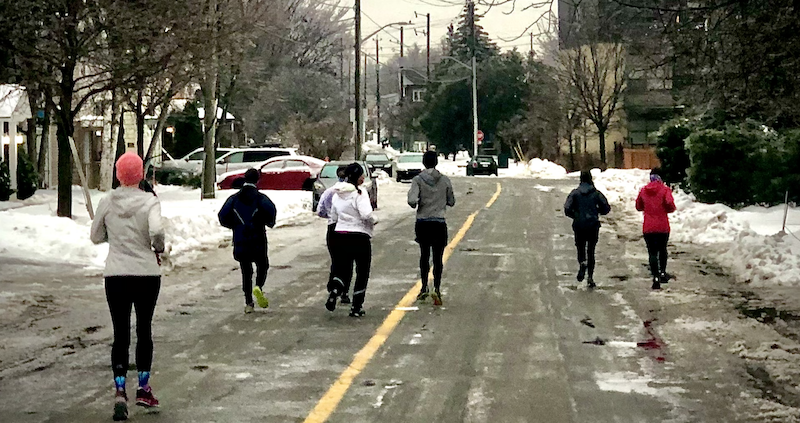
As hostile as those conditions sound, as much fun it actually can be if you prepare for it, and have the right mindset: layer up, cover your face, and drown your exposed skin in Vaseline. Wear extra traction on your shoes when it’s icy, heat up your sports drinks if you’re going for a long run. And don’t expect any personal record times.
Preparing for a February marathon is somewhat unusual not only due to the conditions, but also due the nature of an annual training strategy; most marathons take place in late summer or fall. Participating in a long-distance running event in winter means that your off-season suddenly becomes your peak training phase. But since I have plenty of longer events planned throughout the entire year, Winterman for me seemed like a great motivator to start training early.
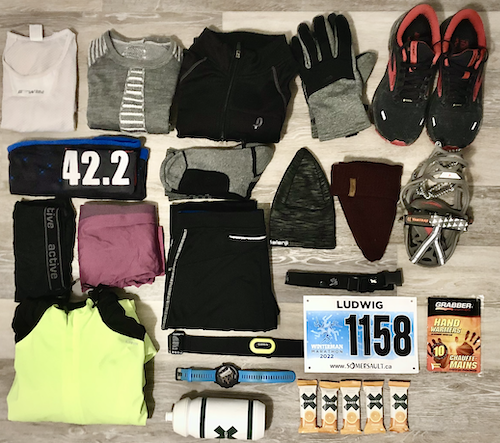
Winterman Marathon
Winterman is a grassroot running event, professionally organized by Somersault, that’s been around for a while. Because of ongoing protests in Ottawa’s downtown area, this year’s edition of Winterman had to be moved to a different neighbourhood – which happened to be just around the corner of my house; how convenient! No long commute, no getting up too early, and no need to use mobile porta-potties at freezing temperatures pre-race.

The close vicinity to the race venue also was a great opportunity to check out the course beforehand – 48 hours prior to race day I did a practice loop only to find the roads in conditions not ideal for long-distance running: 20cm of fresh snow covering a layer of ice. Visually just beautiful; the thought of having to run through this for multiple hours was terrifying, though. But I’d take it. I signed up for Winterman, so I’d better deal with it!
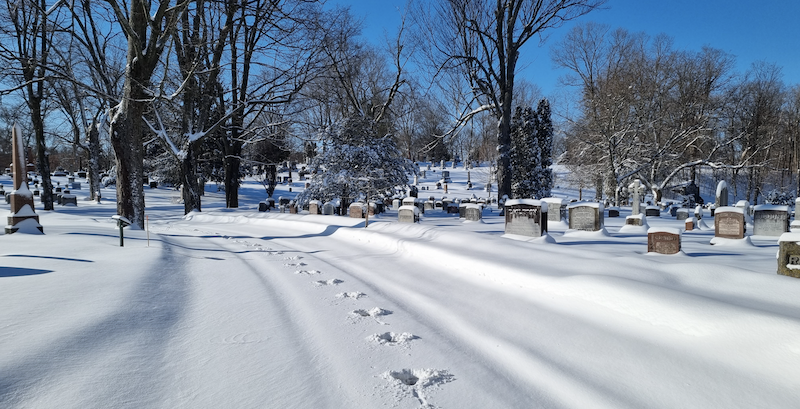
Pre-race
Sunday morning was freezing. 8am temperatures were at -15ºC, with a windchill of -20ºC (-4ºF). This was expected, though, and I knew that the weather itself wouldn’t be my biggest challenge. I opted for my waterproof pair of trail running shoes (Saucony Peregrine 11), no cleats, hoping that my feet could deal with them for such a long distance. I boiled 600ml of water and mixed it with 700 calories of Tailwind powder. That should at least help me through the first half of the distance before the hot beverage would eventually start to freeze.
After a light breakfast and 2 coffees I headed out to the event just 20 minutes before it started. Great to see so many familiar faces at an official event! Many folks from Vanier and Aylmer running groups were there, and I was happy to join Josue, Nancy, Tara, Gina, Jared, Charles, Rendall at the starting line.
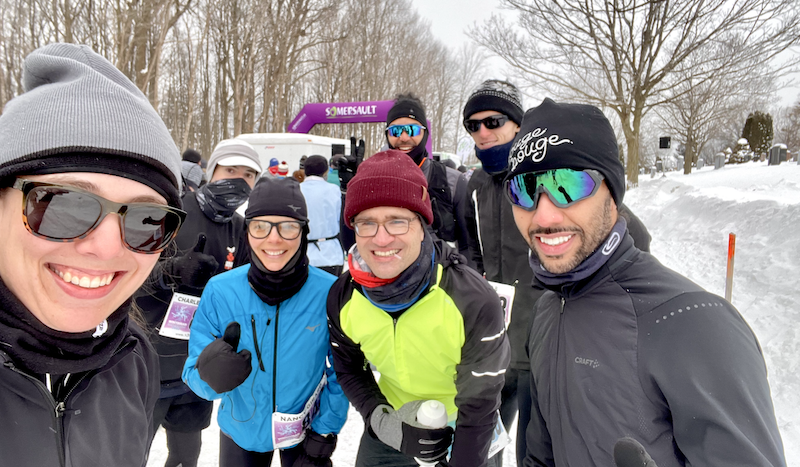
Marathoners and half marathoners would start first as one group in the morning, completing a 5.3km loop 8 (resp. 4) times. Runners who’d do the shorter distances (10k, 5k, 3k) would start later during that day, which helped to not only limit the number of people at the starting line, but also to evenly populate the course with runners, making it a more pleasant atmosphere for everyone. Around 200 runners in total started the race at 8:30am sharp. My first marathon race of 2022 just began!
Loop 1/8: Getting to know the course
My target pace for this run was around 5:10 minutes per kilometer, which I considered a conservative approach, not knowing what the course conditions would be. The first part was quite crowded, and I just went with the flow, without checking my Garmin watch for pacing or heart rate. The run would be long enough, so those first couple of kilometers were just about finding a rhythm, enjoying the vibe, and running along with all those athletes around me. This section of the course wasn’t too bad in terms of snow and ice, and after a very short but steep climb, it went on mostly going downhill. I checked my watch after about ten minutes and was averaging around 4:50min/km; too fast, but then again, I knew that this is a pace I could sustain for a long time and the conditions still allowed for it. Most of the snow had been removed, but it was icy and slippery.
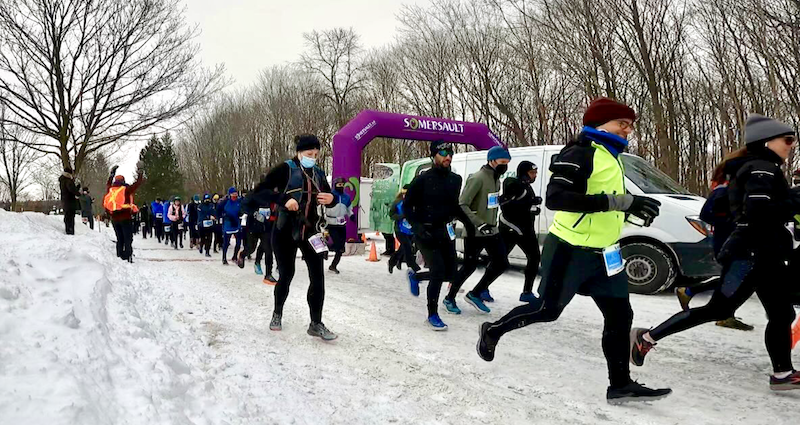
(photo credits: Nancy)
Two kilometers into the course the surface got significantly worse. Loose snow covering large portions of ice made the footing quite tricky. We had to run some 90º corners and some u-turns, which called for extra attention. The good thing, though, about running a loop multiple times is that you get more and more familiar with it and quickly learn which parts you can just cruise through, and where you need to watch out a bit more.
Every 10-15 minutes I reminded myself to take a good sip out of my 600ml water bottle, which I carried in my left hand. Not the best way to transport your fuel, but I knew that the fluid nutrition provided by the organizers would not have enough calories, and I can’t consume those disgusting gels or even solid food while running. As long as the sugary water in my bottle wouldn’t freeze, I’d keep drinking it.
Loop 2/8: Cruising the first 10k
After 5.3 kilometers the first loop was done. We passed the starting line again and were cheered on by volunteers and friends and families, and that race feeling I missed so much over the past years came back. My legs were feeling great, the trail shoes worked quite well, I did not feel cold, and I was surrounded by other runners. My pace still averaged well under five minutes per kilometer and I decided to just go with it. I had set my Garmin watch to tell me how many seconds I’d be ahead or behind my own target time, and at this point I already gained two minutes. This may not be the best strategy for long distances, but I sometimes rather gamble than taking a too conservative approach.
Apart from the surface conditions, the nature of the course was quite enjoyable. No steep long climbs, and not too many sharp turns. There were multiple sections where you would turn around and run the same road back that you came, which allowed you to run towards the athletes that were either in front or behind you and just say hi, or exchange some encouraging words.

(photo credits: Maryse)
The loop offered two water stations. As long as my personal drink hadn’t frozen yet, I wasn’t going to take advantage of those, but I knew at some point it would come in handy that there’s water supply available every 2.7 kilometers. For now though, I just kept cruising, enjoying the ride, and just trying to not think about how much more I’d have to run today.
After the second loop my Garmin showed 10.7km, and the crowd at the starting line now was even bigger – all the 10k athletes were already lining up for their race, which was about to start in seven minutes.
Loops 3&4/8: Still in my comfort zone
During training, I did at least one 20km run every week, sometimes two. This distance, even at these low temperatures, was known territory to me. I knew that I can easily go 20k at a sub5 pace. Nothing hurt, nothing felt uncomfortable. The running crowd got a bit thinner, now that everyone spread out quite evenly over the full loop, but soon some of the fast 10k runners who just started passed me, adding a bit more race atmosphere again. After the turning points I began to see more familiar faces from the Vanier Running Group, who registered for other distances. So much fun!
By now my nutrition drink got really cold, but I almost emptied it already; 700 calories consumed during the first half, that wasn’t too bad. The only thought that kept bugging me towards the end of the fourth loop: can I really do that whole thing a second time now?
When I saw the half marathoners crossing the finish line I second-guessed my decision, of course. But I was still feeling fine, so there was not a single reason to doubt yet. At some point the discomfort would start, that was for sure, but I hoped to have at least one more hour of actually enjoying the run before eventually entering the world of pain.
Loops 5-7/8: Getting harder
First half marathon done in 1h47m. Faster than I expected! Looking at my Garmin, I already earned myself a ten minute buffer which made me hopeful to meet my target, even if I’d slow down towards the end. So I decided to just keep going at that pace of around 5min/km and see where I’d end up.
At kilometer 24 the last bit of my handheld nutrition drink had turned into solid ice. Just when I was about to finish loop 5, I saw Tara walking back from the finish line, proudly wearing her first official Half Marathon medal – I left my frozen water bottle with her, and in exchange received a good motivational boost for the last three laps to come. Which was needed due to increased exhaustion and I had to stop myself from thinking about the remaining distance. Just step after step, one kilometer at a time. And 18 more to go…

During loop 6 I started to have 20-seconds mini breaks at the water stations to refuel. Drinking ice cold energy drinks when it’s -15ºC outside is no fun: first you need to find a cup that isn’t solidly frozen yet, and then you need to somehow manage to keep the fluids in your mouth when your lips and facial muscles are frozen, too. But it felt good to stop for a couple of seconds, thank the volunteers for still being out there, before continuing the increasingly painful journey.
It was now when the technicality of that frozen and snowy course became a real challenge. With each step in the snow your feet would slide a tiny bit back- or sidewards which after well above two hours of running added some serious extra effort. During loop seven my pace dropped down to about 5:25min/km. But I was still running, and my mind was still in a good place. At this time there was no other runner around anymore; all the shorter distance athletes had already finished their race, and the remaining 45 marathoners were spread all over the 5km course. Once in a while I would overtake someone, not knowing which lap number they’d be on, and not having enough energy to start a chat. Whenever I passed by one of the super motivated volunteers, I tried to give them a smile and a verbal thank-you, to show some appreciation for their time; running in this cold is comparably easy, the real challenge is volunteering at a water station or an intersection at those freezing temperatures!
When I finished that 7th loop there were still quite some folks in the finisher area, all of them boldly lying to me that I’d look strong, and encouraging me for that final lap. 37km done, 5 more to go. This was hard, but I knew I’d be able to push through.
Loop 8: Becoming a Winterman
That last loop was the hardest, the most painful, no doubt (and no surprise), and all my legs wanted was stop, my hips and lower back started hurting. But it was also weirdly enjoyable. Since by now I knew the course by heart, it was so easy to break it into small little sections. That first terrible short hill, done. The long downhill stretch, done. The snowy part out to the turnaround point, done. Back to the water station to refuel one last time, done. And then only two more kilometers to go. Endorphins started to kick in, I heard the finish line announcer already. Last turn, last stretch, smile for the picture, and there I was – crossing the finish line after 3 hours and 39 minutes and beating my own target by 50 seconds!

(photo credits: Finisherpix)
Out of our running buddy group I seemed to be the first marathoner who finished, and all the others had already left (understandably, since it’s not fun waiting in freezing temperatures in wet running gear); except one, who warmly welcomed me, witnessing my total exhaustion. It’s the best to see a familiar face just across that finish line!
While waiting for Josue, who was still pushing hard on his last loop, we enjoyed hot chocolate and hot chicken broth, which turned out to be the best treats imaginable after a cold winter run.
Aftermath
- Winter running is fun, but winter racing is even better.
- Somersault runs are perfectly organized yet local events every athlete in the region should check out. Thanks Adam for putting so much effort into it!
- I need to find a better solution for fluid/calorie consumption in extreme cold conditions.
- Finished 4th place over all – that’s already the third time that I’d just miss the podium in an official race.
- Xact nutrition bars are good, but eating them with frozen lips about three hours into the run was not enjoyable.
- This was my sixth marathon overall and correct pacing is still a challenge.
- Next up: Around the Bay Hamilton 30k race in a couple of weeks!
Stats
Total distance: 42.2km (GPS: 43km)
Total time: 3h39m (compared to 3h28m personal best)
Average HR: 169bpm
Total elevation: 260m
Calories burned: 2900
Calories consumed: 850
Fluids consumed: 900ml
Temperature: -15ºC (-20ºC windchill)
Total number of registered runners: 529 (49 of which marathoners)
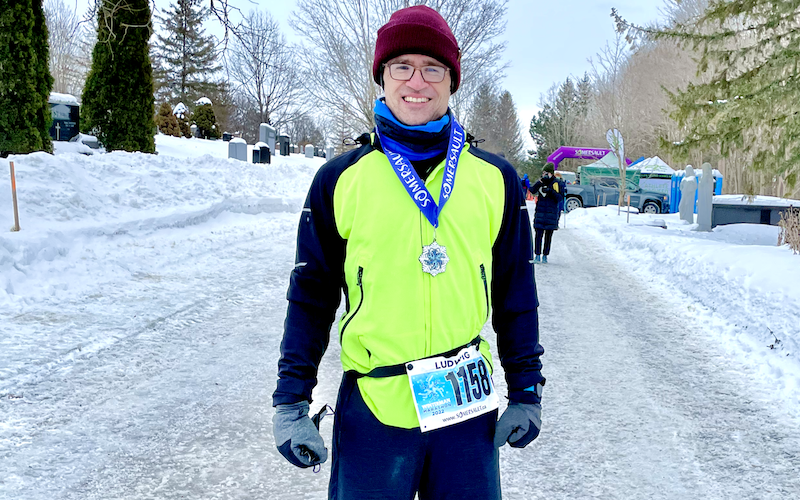
Somersault Winterman Marathon Ottawa, ON, Canada | |||
Overall rating | |||
 | 2022 |  | 50 |
 | Winter |  | 8 loops |
 | 8:30AM |  | Hilly (250m) |
 | -20ºC |  | Snow and ice |
Individual ratings* | |||
Spectators | Scenery & views | ||
On-course nutrition | Overall organization | ||
Medal design | Finisher shirt | ||
Timing and splits | Value | ||
What stood out Only that year the course was held on a cemetary, very unique scenery. 8 loops on snow/ice at -20ºC. On course nutrition frozen… Somersault's shirt designs are always great; but the fabric, while functional, is too thick and not breathable enough to be used as a running shirt. | |||
*Individual ratings: details see below
Note that those ratings are highly subjective and only based on the last time I personally ran that particular race. Some things like medal or finisher shirt design can highly fluctuate from year to year. Please feel free to leave a comment or contact me for any more details.
Spectators: How many spectators along the course? How much action and welcome mental distraction for runners, especially during the second half of the course was offered? Higher ratings for more spectators, action, music, etc.
On-course nutrition: Number of water stations and variety of nutrition offered.
Medal design: Important aspects for me: Does the medal to some extent resemble the location or the course? Does it show the distance and date of the event? Does it have a reasonable size and shape? How creative is the design? Does it look cheap?
Timing and splits: How many timing mats were on the course? Were there timing mats in key areas to prevent shortcuts and to provide timing splits?
Scenery/views: How much visual distraction and awe do you get as a runner along the course. Usually one-loop or point-to-point races provide more variety than multi-loop courses. I value natural scenery higher than industrial or suburban areas.
Overall organization: How well was the whole event organized; including communication before and after the event, available course information, expo, additional events, pre- and post-race announcers, start and finish line area design, etc.
Finisher shirt: Design of the shirt, the type of fabric, is it full of sponsors?
Value: What you get vs what you paid. Some races are super expensive and you don’t even get a shirt, others are reasonably priced and even include a pasta party the day before. High ratings either mean cheap entry or lots of goodies.

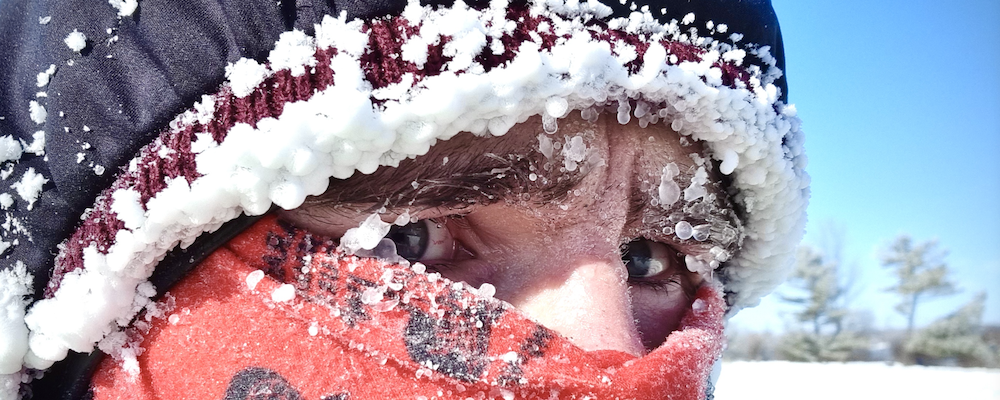
This was awesome to read!! Great job, Ludwig 🙂 Did you consider a camel pack under your jacket?
It sure was a challenge!
Congratulations on an awesome race!